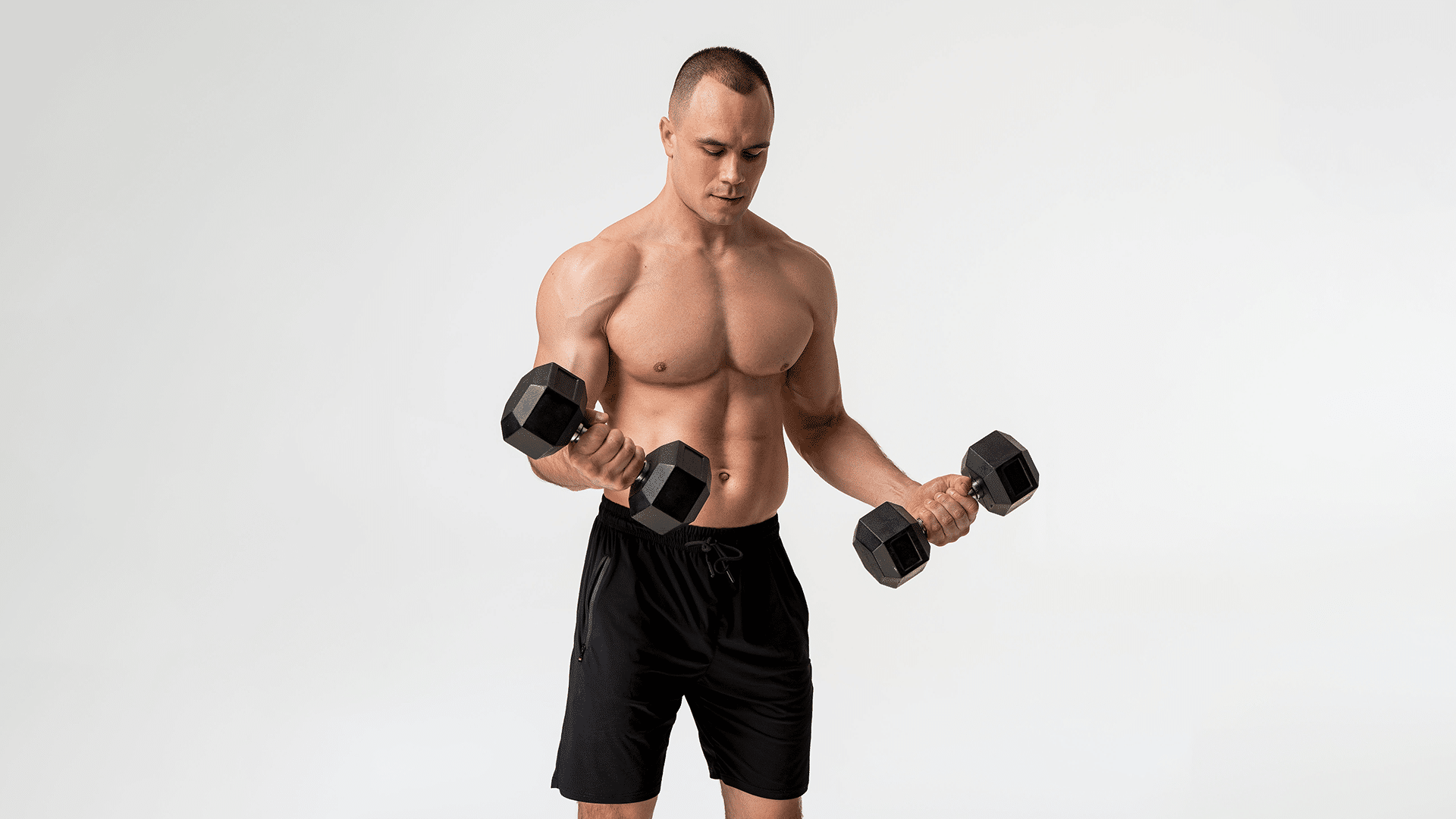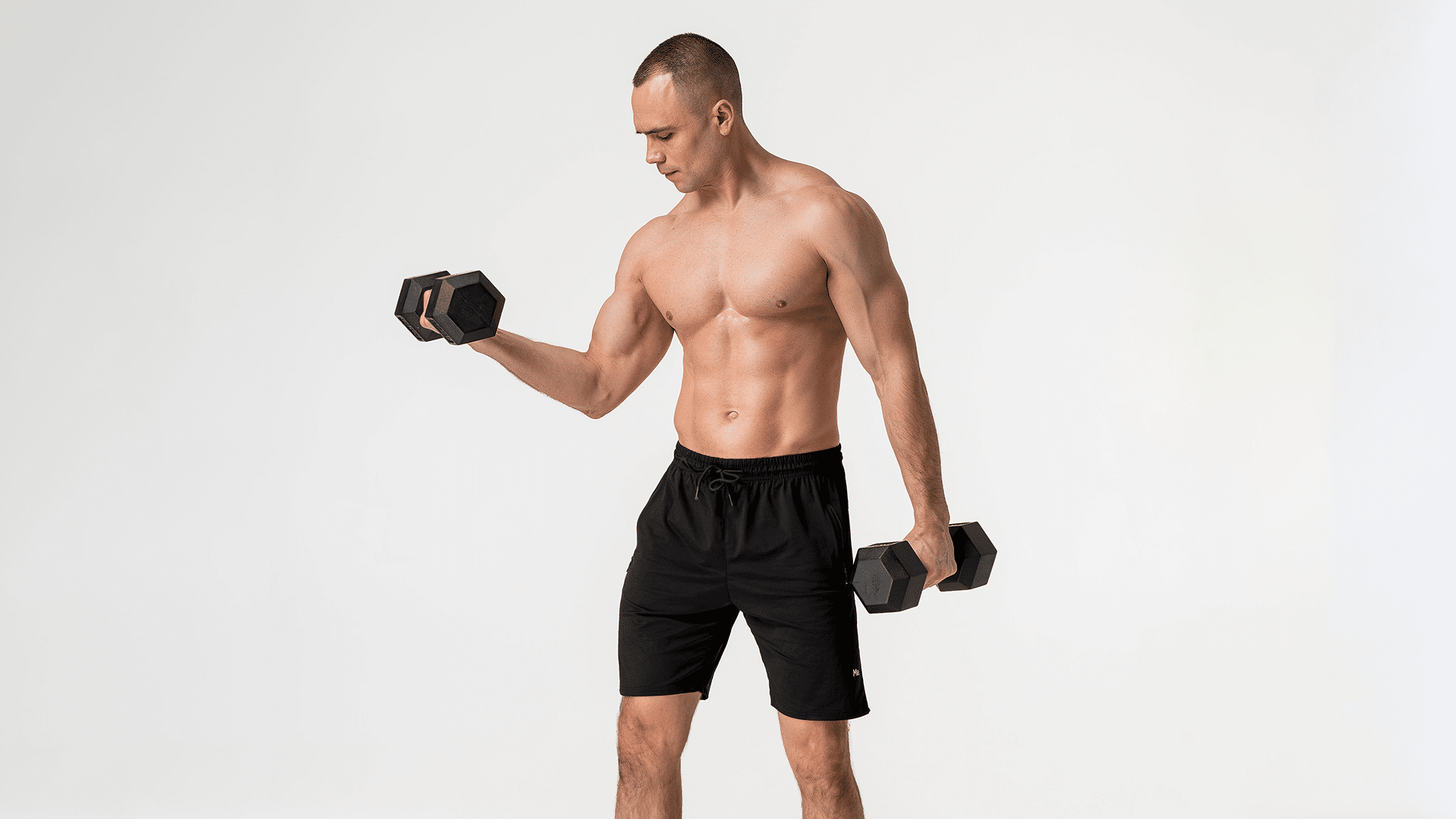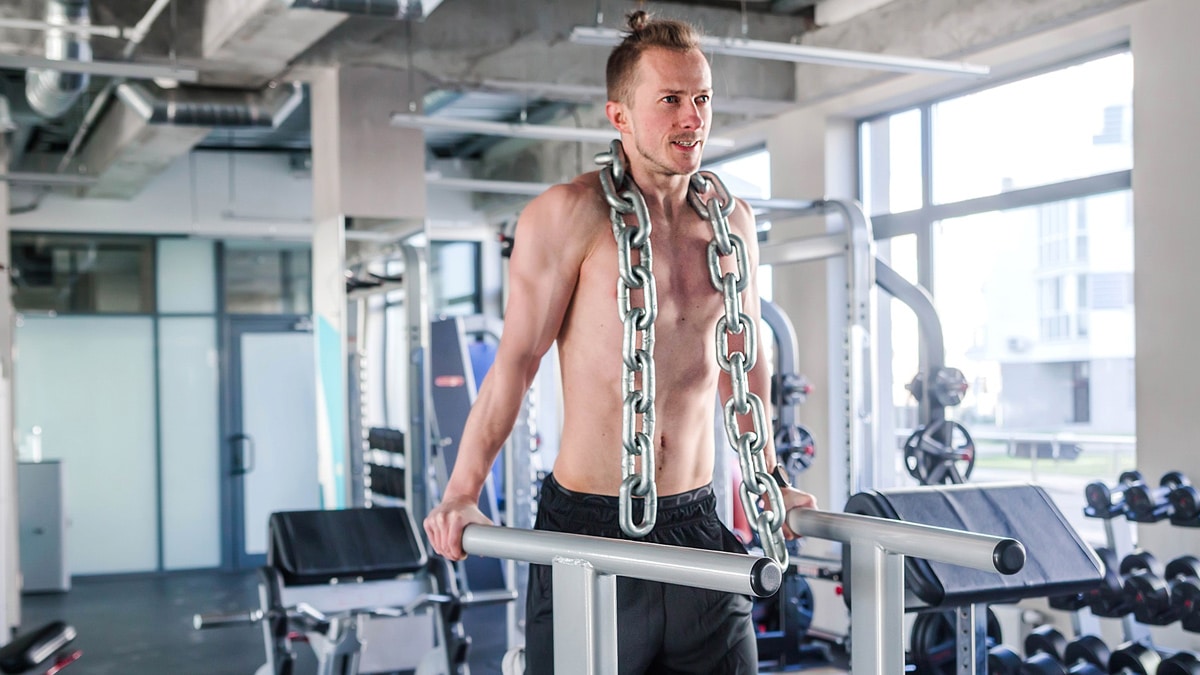Maximize your calisthenics workout with weighted dumbbell exercises. Learn the benefits, techniques, and tips to reach your fitness goals efficiently.
In today’s fast-paced fitness world, maximizing the effectiveness of your workout is crucial. If you’re looking to elevate your calisthenics routine to the next level, incorporating weighted dumbbell exercises can be a game-changer. By adding resistance to familiar bodyweight movements, you can challenge your muscles in new ways, stimulate growth, and enhance overall strength and power. In this article, we will explore the benefits of weighted calisthenics exercises with dumbbells and how they can help you reach your fitness goals faster and more efficiently. Whether you’re a beginner or an experienced athlete, the techniques and tips discussed here will provide valuable insights to optimize your calisthenics journey. So, let’s dive into the world of weighted calisthenics and unlock the true potential of your workout routine.
Maximize Your Calisthenics Workout with Weighted Dumbbell Exercises
Calisthenics, a form of bodyweight training, is gaining popularity for its ability to build strength, flexibility, and muscular endurance. However, if you want to take your calisthenics training to the next level, incorporating weighted dumbbell exercises can be highly beneficial. Adding weight to your calisthenics routine not only increases resistance but also allows for more progressive overload, targeting specific muscles and enhancing overall muscle activation. In this article, we will explore various upper body, lower body, core, and full-body exercises using dumbbells, discuss techniques to increase resistance, ensuring proper technique and form, safety considerations, workout programming, and the benefits of weighted dumbbell calisthenics.

1. Upper Body Exercises
1.1 Push-ups
Push-ups are a fundamental bodyweight exercise for strengthening the chest, shoulders, and triceps. By adding dumbbells to this exercise, you increase the load on these muscles, resulting in greater muscle activation and strength gains.
1.2 Dumbbell Bench Press
Dumbbell bench press is an excellent exercise for targeting the chest muscles. This exercise allows for a greater range of motion compared to traditional bench presses, as each arm moves independently. By using dumbbells, you can also focus on any muscular imbalances and improve overall stability.
1.3 Dumbbell Rows
Dumbbell rows are perfect for targeting various muscles in the back, including the latissimus dorsi, rhomboids, and trapezius. By performing dumbbell rows, you improve upper body strength and posture by strengthening the muscles responsible for pulling movements.
1.4 Dumbbell Chest Fly
Dumbbell chest fly primarily targets the chest muscles, particularly the pectoralis major and minor. This exercise allows for a deeper stretch in the chest muscles, enhancing flexibility and building strength. By using dumbbells, you can customize the weight and resistance to suit your fitness level.
1.5 Dumbbell Shoulder Press
Dumbbell shoulder press is an effective exercise for targeting the shoulder muscles, specifically the deltoids. This exercise improves shoulder stability, enhances upper body strength, and promotes balanced muscle development. With dumbbells, you have the flexibility to adjust the weight and isolate each shoulder independently if needed.
2. Lower Body Exercises
2.1 Dumbbell Squats
Dumbbell squats are a fantastic exercise for targeting the muscles of the lower body, including the quadriceps, hamstrings, and glutes. By holding dumbbells at your sides during squats, you increase the load on these muscles, promoting greater strength and muscular development.
2.2 Dumbbell Lunges
Dumbbell lunges are an excellent compound movement that engages multiple muscles, including the quadriceps, hamstrings, glutes, and calves. By adding dumbbells, you increase resistance, making the exercise more challenging and effective for building lower body strength and stability.
2.3 Dumbbell Romanian Deadlifts
Dumbbell Romanian deadlifts primarily target the hamstrings, glutes, and lower back muscles. This exercise improves posterior chain strength, enhances hip mobility, and promotes proper hip hinge mechanics. With dumbbells, you can perform Romanian deadlifts with a wider range of motion and better control.
2.4 Dumbbell Step-Ups
Dumbbell step-ups are an effective lower body exercise, targeting the quadriceps, hamstrings, and glutes. By stepping onto an elevated platform while holding dumbbells, you challenge your leg muscles in a different way, improving strength, stability, and coordination.
2.5 Dumbbell Calf Raises
Dumbbell calf raises are perfect for targeting the calf muscles, specifically the gastrocnemius and soleus. This exercise strengthens the calves, improves ankle stability, and enhances overall lower body strength. By holding dumbbells, you increase resistance and make the exercise more challenging.

3. Core Exercises
3.1 Dumbbell Russian Twist
Dumbbell Russian twists are a great exercise for targeting the obliques and strengthening the core muscles. By holding a dumbbell or weighted plate, you increase resistance and engage your core muscles even further, promoting greater stability and rotational strength.
3.2 Dumbbell Woodchoppers
Dumbbell woodchoppers are a dynamic exercise that targets the obliques, rectus abdominis, and other core muscles. This exercise mimics the movement of chopping wood, engaging the entire core and improving rotational power. By incorporating dumbbells, you increase resistance and challenge your core muscles to work harder.
3.3 Dumbbell Plank Rows
Dumbbell plank rows are an advanced core exercise that targets multiple muscles, including the abdominals, obliques, and upper back. By combining a plank and a rowing movement, you improve core stability, upper body strength, and muscular endurance. Adding dumbbells to this exercise increases the resistance and intensifies the challenge.
3.4 Dumbbell Side Bend
Dumbbell side bends primarily target the obliques, promoting lateral core strength and stability. This exercise helps create a balanced physique, enhance posture, and improve overall core strength. By holding dumbbells, you increase resistance and create a greater challenge for your oblique muscles.
3.5 Dumbbell Sit-ups
Dumbbell sit-ups are a classic exercise for targeting the rectus abdominis or “six-pack” muscles. By holding a dumbbell at your chest during sit-ups, you increase resistance and engage your core muscles more effectively. This exercise promotes abdominal strength, stability, and overall core development.
4. Full Body Exercises
4.1 Dumbbell Thrusters
Dumbbell thrusters are a challenging full-body exercise that combines a squat with an overhead press. This compound movement targets multiple muscle groups, including the legs, shoulders, and arms, in one fluid motion. By adding dumbbells to thrusters, you increase resistance and intensity, making it an effective exercise for overall strength and conditioning.
4.2 Dumbbell Burpees
Dumbbell burpees are an upgraded version of the traditional burpee, combining a squat, push-up, and jump. By holding dumbbells during burpees, you add an extra challenge to the exercise, engaging more muscles and increasing overall strength and power. Dumbbell burpees are an efficient full-body exercise for cardiovascular endurance and muscular development.
4.3 Dumbbell Clean and Press
Dumbbell clean and press is a dynamic exercise that targets the legs, shoulders, upper back, and arms. This movement involves lifting the dumbbells from the floor to the shoulders and then pressing them overhead. By performing clean and press with dumbbells, you improve explosive power, enhance total body strength, and develop coordination and stability.
4.4 Dumbbell Renegade Rows
Dumbbell renegade rows are a challenging exercise that targets the upper body, particularly the back, shoulders, and arms. This exercise involves being in a plank position while performing rows with dumbbells, engaging the core muscles for stability. Renegade rows improve upper body strength, stability, and overall muscle coordination.
4.5 Dumbbell Mountain Climbers
Dumbbell mountain climbers are a variation of the traditional mountain climber exercise that adds a new level of intensity and resistance. By holding dumbbells in a push-up position and bringing the knees towards the chest alternately, you engage more upper body muscles while still targeting the core and legs. This exercise improves cardiovascular endurance, core strength, and overall muscle coordination.

5. Increasing Resistance
5.1 Progressive Overload
Progressive overload is key to maximizing your strength and muscle gains. By gradually increasing the weight or resistance used in your exercises, you challenge your muscles to adapt and grow stronger over time. With dumbbells, you can easily track and adjust the load to ensure progressive overload in your workouts.
5.2 Weight Selection
Choosing the appropriate weight for your dumbbell exercises is crucial to getting the most out of your workout. Start with a weight that allows you to perform the exercises with proper form and technique, without compromising your safety. As you become stronger and more comfortable, gradually increase the weight to continue challenging your muscles.
5.3 Tempo Control
Controlling the tempo or speed of your movements during exercises can significantly impact their effectiveness. By slowing down the eccentric or lowering phase of the exercise and maintaining control throughout the entire range of motion, you engage more muscle fibers and stimulate greater muscle growth. Experiment with different tempos to find the optimal pace for each exercise.
5.4 Eccentric Training
Eccentric training involves focusing on the negative or lowering phase of an exercise. By emphasizing the eccentric portion, you create more muscle damage and stimulate greater muscle growth and strength gains. With dumbbells, you have better control over the eccentric phase, allowing you to slow down and emphasize this part of the movement.
5.5 Supersets
Incorporating supersets into your dumbbell workouts can be a great way to increase intensity and save time. Supersets involve performing two exercises back-to-back with little to no rest in between. By pairing exercises that target different muscle groups, you work more muscles in less time, promoting greater muscle activation and metabolic demand.
6. Proper Technique and Form
6.1 Warm-Up Routine
Before diving into your weighted dumbbell calisthenics workout, it is crucial to warm up properly. A dynamic warm-up routine that includes joint mobility exercises, light cardio, and dynamic stretching prepares your muscles and joints for the upcoming workout, reduces the risk of injury, and improves overall performance.
6.2 Neutral Spine Alignment
Maintaining a neutral spine alignment throughout your exercises is essential for proper technique and minimizing the risk of injury. Whether performing upper body, lower body, or core exercises, focus on keeping your back straight and avoiding excessive rounding or arching. Engage your core muscles to support your spine and maintain stability.
6.3 Range of Motion
Executing exercises through a full range of motion allows for optimal muscle activation and development. Ensure that you are performing each exercise with proper form, achieving the full range of motion without compromising your posture or safety. If needed, start with lighter weights to maintain control and gradually increase the load as your range of motion improves.
6.4 Breathing Techniques
Proper breathing techniques can improve your performance and stability during weighted dumbbell exercises. While different exercises may require specific breathing patterns, a general guideline is to exhale during the concentric or exertion phase and inhale during the eccentric or lowering phase. Focusing on your breathing helps maintain core stability and ensures efficient oxygen delivery to your muscles.
6.5 Stability and Control
Maintaining stability and control throughout your exercises is essential for optimizing muscle activation and preventing injury. Avoid using excessive momentum or jerky movements when performing weighted dumbbell exercises. Instead, focus on controlled and deliberate movements, engaging the targeted muscles throughout the entire range of motion.

7. Safety Considerations
7.1 Starting with Light Weights
If you are new to weighted dumbbell exercises or calisthenics in general, it is important to start with lighter weights to allow your body to adapt gradually. Begin with weights that are challenging but manageable, focusing on proper form and technique. As you develop strength and confidence, gradually increase the weight to continue progressing.
7.2 Proper Warm-up
Never skip your warm-up routine, as it prepares your body for the demands of the workout and reduces the risk of injury. A thorough warm-up should include joint mobility exercises, light cardio, and dynamic stretching. Take the time to properly warm up your muscles and improve their flexibility before engaging in any weighted exercise.
7.3 Spotter Assistance
When performing heavy dumbbell exercises, especially those that involve pressing weight overhead or lifting near your maximum capacity, having a spotter can provide an extra level of safety and support. A spotter can help you maintain proper form, prevent accidents, and assist with lifting heavier weights when needed.
7.4 Rest and Recovery
Proper rest and recovery are crucial for optimal progress and injury prevention. Avoid overtraining by allowing adequate rest days between workouts and ensuring you are getting enough sleep and nutrition to support muscle repair and growth. Listen to your body and give it the time it needs to recover and rebuild.
7.5 Listen to Your Body
Listening to your body is key to avoiding injury and ensuring long-term success with weighted dumbbell calisthenics. Pay attention to any signs of pain, discomfort, or fatigue during your workouts. If an exercise doesn’t feel right or causes pain, modify or replace it with a safer alternative. Prioritize your health and well-being above all else.
8. Workout Programming
8.1 Goal Setting
Before starting any workout program, it is important to define your goals. Whether you aim to build strength, increase muscle mass, improve endurance, or enhance overall fitness, having clear goals allows you to structure your workouts and track your progress effectively.
8.2 Split Workouts
Splitting your workouts into different muscle groups or movement patterns can help you maximize your training efficiency and allow for adequate recovery. Depending on your fitness level and goals, you can design a split routine that focuses on specific muscle groups or includes full-body workouts with targeted emphasis on different days.
8.3 Frequency and Duration
Determining the frequency and duration of your weighted dumbbell calisthenics workouts depends on various factors, including your goals, schedule, and fitness level. Aim for at least two to three days of focused strength training per week, allowing for a day of rest in between sessions to promote recovery.
8.4 Rest Days
Rest days are essential for your body to recover, repair, and adapt to the training stimulus. Scheduling regular rest days in your workout program helps prevent overtraining and reduces the risk of injuries. Use rest days to engage in active recovery activities, such as light stretching, yoga, or low-intensity cardio.
8.5 Tracking Progress
Tracking your progress is vital to ensure continuous improvement and stay motivated. Keep a workout journal or use a fitness tracking app to record the weights, sets, and repetitions you complete for each exercise. Tracking your progress allows you to identify areas of improvement and set appropriate goals for future workouts.

9. Combining Calisthenics and Weighted Dumbbell Exercises
9.1 Circuit Training
Circuit training is a highly effective way to combine calisthenics and weighted dumbbell exercises into one challenging workout. By alternating between bodyweight exercises and dumbbell exercises with minimal rest in between, you increase both cardiovascular endurance and muscular strength. Design a circuit routine that targets various muscle groups and adjust the intensity and duration to match your fitness level.
9.2 Hybrid Calisthenics
Hybrid calisthenics combines bodyweight exercises and weighted exercises seamlessly, allowing you to enjoy the benefits of both training modalities. By incorporating weighted dumbbell exercises into traditional calisthenics movements, you increase resistance and add a new level of challenge to your workouts. Experiment with different combinations to create your own hybrid calisthenics routine.
9.3 Weighted Calisthenics Programs
Weighted calisthenics programs are designed specifically to incorporate weighted exercises into a calisthenics training regimen. These programs often focus on progressive overload, targeting specific muscle groups, and improving overall strength and muscle development. Following a structured weighted calisthenics program can help you achieve your desired fitness goals effectively.
9.4 Integration with Bodyweight Routines
Integrating weighted dumbbell exercises with bodyweight routines allows for more versatility and variety in your workouts. By combining calisthenics movements such as push-ups or squats with corresponding dumbbell exercises, you challenge your muscles in new ways and promote balanced muscle development. Explore different combinations and adjust the weight and intensity based on your individual needs.
9.5 Multi-Planar Movements
Multi-planar movements involve exercises that target multiple planes of motion, such as sagittal (forward and backward), frontal (side-to-side), and transverse (rotational). By incorporating weighted dumbbell exercises that challenge these different planes of motion, you improve overall functional strength, reduce the risk of imbalances, and enhance athletic performance.
10. Benefits of Weighted Dumbbell Calisthenics
10.1 Increased Muscle Activation
By adding weights to your calisthenics exercises, you increase muscle activation and target specific muscles more directly. This leads to greater strength gains, improved muscle development, and enhanced overall muscular endurance. Weighted dumbbell calisthenics allow you to customize the resistance to match your fitness level and goals.
10.2 Improved Strength and Power
Weighted dumbbell calisthenics are highly effective for increasing both muscular strength and power. By challenging your muscles with additional resistance, you force them to adapt and become stronger. The increased resistance also helps develop explosive power, making it a valuable training method for athletes and individuals aiming to improve athletic performance.
10.3 Balanced Muscle Development
Weighted dumbbell calisthenics allow for targeted muscle development, helping to address and correct any muscular imbalances. By focusing on specific muscle groups and using proper technique, you promote balanced muscle development and overall symmetry. This not only enhances your physique but also contributes to improved posture and movement mechanics.
10.4 Versatility and Convenience
Using dumbbells in your calisthenics routine offers versatility and convenience compared to traditional weightlifting equipment. Dumbbells are compact, portable, and allow for a wide range of exercises. With a few sets of dumbbells, you can effectively train your entire body, making it a convenient option for those with limited space or who prefer working out at home.
10.5 Enhanced Calisthenics Progress
Weighted dumbbell calisthenics can greatly enhance your overall calisthenics progress. By incorporating weighted exercises, you provide new stimuli to your muscles, leading to accelerated strength gains, increased muscle hypertrophy, and improved overall performance. Weighted dumbbell calisthenics can help break through training plateaus and take your calisthenics skills to new heights.
Incorporating weighted dumbbell exercises into your calisthenics routine can significantly enhance your overall fitness and strength gains. By targeting specific muscle groups, increasing resistance, and utilizing proper technique and form, you can maximize the effectiveness of your workouts. Remember to prioritize safety, listen to your body, and track your progress along the way. With a well-designed workout program and consistent effort, you can achieve exceptional results with weighted dumbbell calisthenics.
